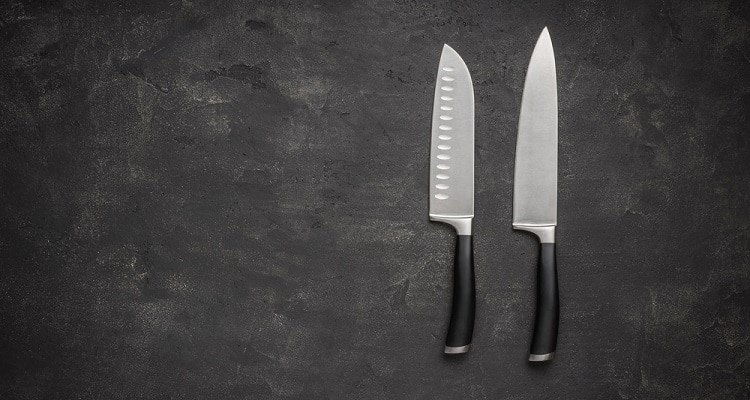
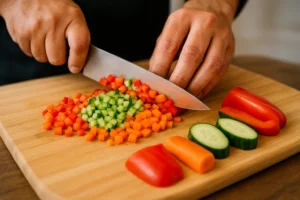

They say that a poor workman blames his tools, and when it comes to the kitchen, one of the most important tools you will ever buy is a good quality knife. Whether you’re a budding Gordon Ramsay or you just want to improve on your home cooking skills, your choice of a knife can mean the difference between success and failure.
There are, of course, lots of different options out there when it comes to choosing a quality kitchen knife. And today, we’re taking a look at Santoku and Chef Knives for budding cooks and seasoned chefs.
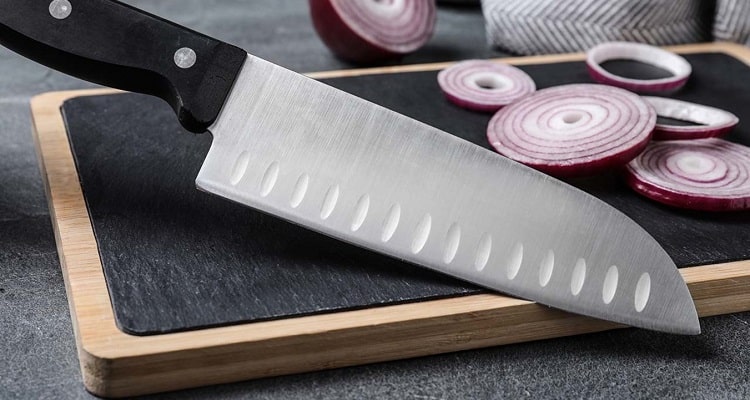
First popular in the mid-20th century, the Santoku Knife originated in Asia and was created as an alternative to the traditional Nakiri Japanese vegetable cleaver, the Nakiri.
Santoku knives have a boxy build and resemble a small cleaver. The blade is around the length of an adult’s hand (between five and eight inches) and is straight along both edges before curving down to a sheep’s foot tip.
The Santoku is held and used in a back-up to down-front movement and is designed to minimize ‘rocking’ during use. Santoku knives are usually used for three purposes; mincing, dicing, and slicing of vegetables (the full name of these knives is Santoku Bocho which translates to ‘three uses’.
My Top 3 Santoku Knives
| Preview | Product | Rating | |
|---|---|---|---|

| Shun Premier 7" Santoku Knife | No ratings yet | Buy Now |

| Mac Knife Superior Santoku Knife, 6-1/2-Inch, Silver | No ratings yet | Buy Now |

| ZWILLING J.A. Henckels Pro 7 Hollow Edge Rocking Santoku Knife, Silver | No ratings yet | Buy Now |
The most effective way to sharpen your Santoku knife is to use a whetstone as this gives a sharper edge than using other methods.
To use the a sharpening stone:
There are a few things to look out for when purchasing a Santoku knife and these are:
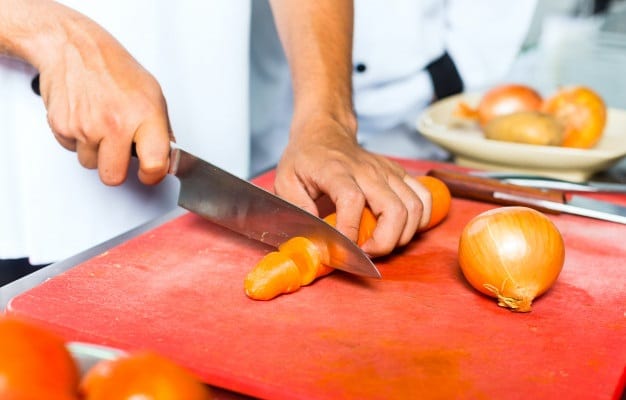
As a rule of thumb, a chef’s knife will have a blade of approximately 20 centimeters in length and a height of around four to five centimeters. Chef’s Knives are generally designed with a slight curve to allow for the easy holding of the ingredient against the blade when working.
A chef’s knife is usually used in a rocking motion. Overall, they’re a good quality product suitable for cutting vegetables, meat, fish and herbs.
My Top 3 Chef Knives
The best way to sharpen a Chef’s knife is by using a whetstone or honing steel, and the latter is generally considered the more effective. Sharpen your knife by doing the following:
Although we live in the age of the internet when shopping for a Chef’s knife, it’s best to visit an actual, honest to goodness, store. This is important as the key to finding the right Chef’s knife is all about how it feels in your hand. When trying on Chef’s knives for size, you should be looking for:
While both knives are versatile enough for multiple uses within a professional or home kitchen, they differ in design as the Santoku’s blade is largely flat and straight compared to the curved shape of the Chef’s knife. These knives also differ in technique as a Santoku knife involves slicing through food in a forward and backward motion whereas a Chef’s knife is usually used in a rocking motion.
Both the Santoku and the Chef’s knife can be used for chopping and slicing vegetables, the Santoku is best suited to precision work where thin cuts are required. Chef’s knives, on the other hand, are designed more for universal use.
This is all down to what you’re planning to use your knife for. As a rule, the Santoku is a great choice if you’re looking to make precision cuts such as salad garnishes and you can expect to pay around $75 for a good quality knife.
A Chef’s knife, on the other hand, is suited to more general cutting and slicing and tends to be a little less expensive at around $40 for a decent quality product.
Whether you’re going for the Santoku or a Chef’s knife, a good quality blade is an investment and should last for years. It’s always worth paying as much as you can afford to get the best quality knife that is durable and that will maintain a sharp edge. And as mentioned in this article, how the knife feels in your hand is incredibly important so it really is worth testing a few knives before making a final decision.
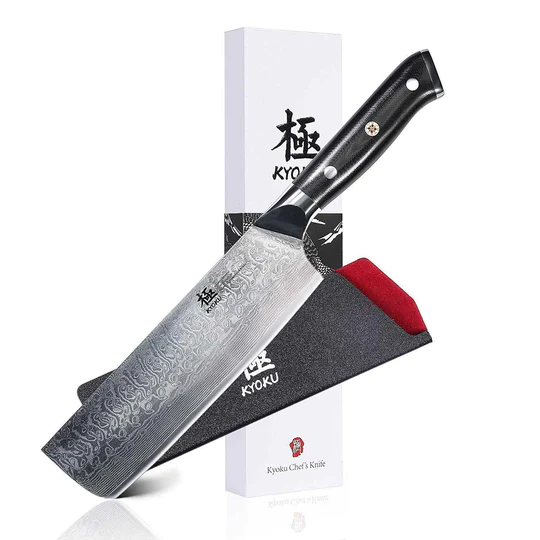
Knife Buzz offers independent product reviews on a wide range of knives used in the kitchen, home, and outdoors. We make it easy for you to find the right knife at the best price.

Knife Buzz offers independent product reviews on a wide range of knives used in the kitchen, home, outdoors and at work.
The Knife Buzz Team are passionate about reviewing knives and we cater to a targeted audience that needs independent advice before purchasing.
KnifeBuzz.com may earn affiliate commissions on some pages of this website. Knife Buzz is a participant in the Amazon Services LLC Associates Program, an affiliate advertising program designed to provide a means for sites to earn advertising fees by advertising and linking to Amazon.com. Amazon and the Amazon logo are trademarks of Amazon.com, Inc, or its affiliates. When you click links to various merchants on this site and make a purchase, this can result in this site earning a commission. Other affiliate programs and affiliations include, but are not limited to, Google AdSense.